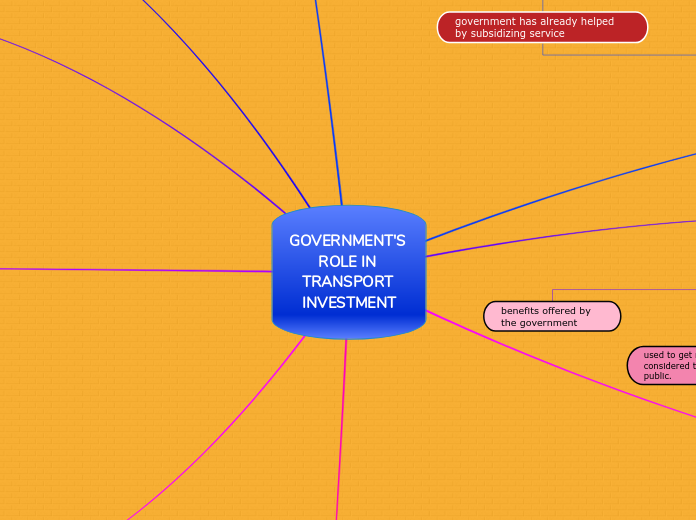GOVERNMENT'S ROLE IN TRANSPORT INVESTMENT
Subsidies and public transport
government has already helped by subsidizing service
such as public transport
very important for those weak groups
low income households
individuals without driver license
aged pedestrians
persons with handicap
good solution for urban transport problem caused by car
noise and air pollution
difficulties to have parking slot
traffic jam and congestion
increase in travel volume
decrease scheduling cost of every traveler
to a supply response in terms of higher frequencies
Definition
Subsidy
benefits offered by the government
Objective
used to get rid of some burden and considered to be in the interest of the public.
form of financial aid or support extended to an economic sector
Cross subsidy
charging higher prices to one type of consumers to artificially lower prices for another group.
Cost-Benefit Analysis
Process of quantifying costs and benefits of a decision, program or project (over a certain period) and those of its alternative.
not limited to monetary considerations only
environmental and social costs and benefits that can be reasonably quantified.
estimates the net present value (NPV) of the decision by discounting the investment and returns.
compares the costs of road schemes with the benefits derived by road users and expresses those benefits in monetary terms.
Business owner will conduct CBA
outcome of the analysis will determine whether the project is financially feasible or if the company should pursue another project.
evaluate all the potential costs and revenues that a company might generate from the project
Benefits
Revenue and sales increase
Intangible benefits (improved employees morale and safety, customer satisfaction).
Market share gained
Cost
Types of subsidy
Direct
tax breaks, insurance, low-interest loans and rent rebates
Indirect
cash grants, interest-free loans
The importance of subsidy
To reduce the costs of supply to the provider.
To reduce public transport charges
Objective of subsidy is often used to get rid of some burden and considered to be in the interest of the public
To provide efficient transport infrastructures
Advantages
A cost-benefit analysis simplifies the complex decisions in a project
The analysis gives clarity to unpredictable situations. The listing of costs and benefits helps the analyst to identify and later evaluate each cost and benefit
It helps to figure out whether the benefits outweigh the cost and it is financially strong and stable to pursue it
The cost-benefit analysis helps to make a rational decision by looking at the figures expressed in the same units
